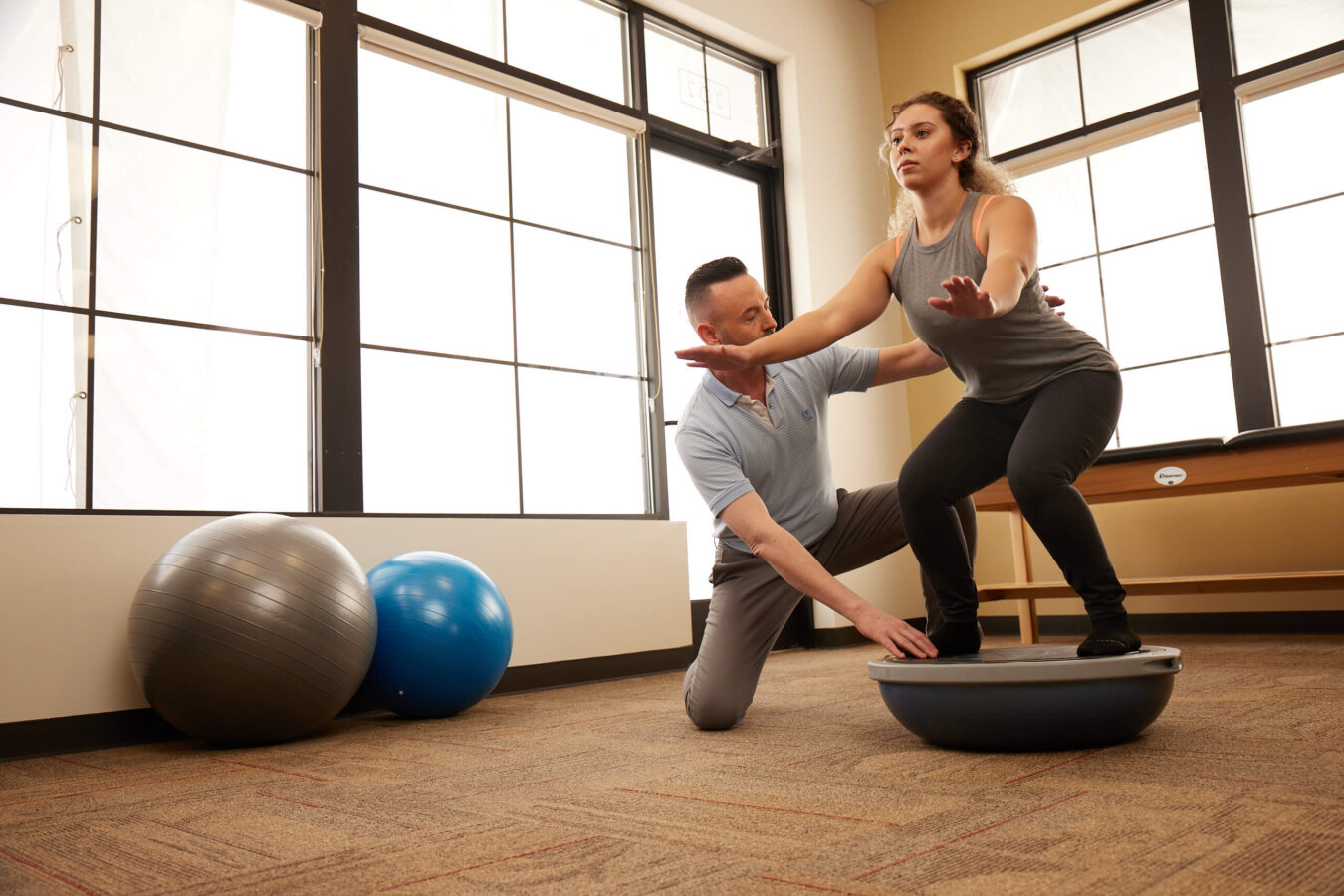
Physical therapists use therapeutic exercise to correct and rehabilitate musculoskeletal impairments that cause pain and affect function. Exercise is typically the foundation of a comprehensive physical therapy program, and it’s tailored to your specific treatment needs and goals. Here is an overview of some common exercises used in physical therapy for patients of all ages and health concerns.
Falls are one of the leading causes of hospitalization in the U.S., affecting 36 million older adults annually. It’s important to address balance disorders that increase the risk of falls, because one in five falls results in broken bones and other serious injuries.
Parts of the sensory system, the central nervous system, and the inner ear are all involved with maintaining balance. If these systems are impaired by disease, injury, or the natural aging process, the person may feel dizzy or unsteady on their feet. Muscles that are weak or don’t work together effectively may also cause problems with coordination too.
Balance and coordination exercises involve the neural, vestibular, and muscular systems to help them work together more efficiently. Most balance exercises focus on maintaining the patient’s center of gravity in a standing position and during movement. Other techniques may be prescribed to address symptoms of vertigo specifically related to the inner ear.
For some physical therapy patients, the goal is to ambulate, or walk, independently or with assistance. Balance and coordination exercises are the first step in this process. Once the patient can maintain balance while standing, they can begin walking as needed with aids: parallel bars, crutches, or a walker or cane.
Once they have mastered walking safely, they can practice walking up and down steps and over curbs. Walking exercises allow many people to remain active and live independently, two of the many benefits of physical therapy.
Physical therapy exercises also help patients experiencing breathing problems. Difficulty breathing can be linked to a disease like COVID-19 that restricts lung function. In this case, corrective exercises to strengthen the diaphragm and postural muscles will improve lung capacity and make breathing easier.
People who have a sedentary lifestyle or cut back on exercise temporarily because of an injury or chronic condition may have shortness of breath during activity. By introducing exercise gradually, they become stronger, and their heart and lungs won’t have to work as hard. Moving and breathing become easier over time.
Aerobic or endurance exercise consists of activities that increase heart rate and breathing. It helps to make everyday activities easier and improves cardiovascular conditioning. It also lowers blood sugar, increases “good” cholesterol, lowers blood pressure, and aids with weight management/weight loss.
The American Heart Association recommends at least 150 minutes of moderate-intensity aerobic activity every week for healthy adults. Biking, running, dancing, and swimming are all aerobic activities. But not everyone is a candidate for high-intensity exercise, and that’s okay.
You can still reap all the benefits of aerobic exercise if you have been sedentary, recovering from an injury, or are living with a chronic health condition like osteoarthritis. Your physical therapist will prescribe safe, low-impact exercises like aquatic therapy and walking, which are good for your health, but gentle on the body.
After an injury or surgery, muscles can weaken very quickly. For some patients, muscle loss happens because pain and limited mobility make exercise difficult. Strength-training helps rebuild affected muscle tissues often with resistance bands, weights, or even bodyweight.
The benefits of strength training include:
Strengthening is not always about “bulking up.” It’s a way to encourage healthy movement and function throughout the body. Physical therapy offers safe, guided, effect resistance training for patients of all ages and abilities.
Flexibility is the extent to which muscles, joints, and soft tissues are able to move through full range of motion without pain or limitation. Smooth and efficient movement is possible when these structures are able to contract and lengthen without restriction.
Many variables affect a person’s flexibility. Age, activity level, injuries, and lifestyle all play a role. After assessing the patient’s flexibility, physical therapists introduce specific controlled movements in short increments to improve range of motion at the joints and mobility in the soft tissue structures surrounding them.
Good flexibility reduces stress on tissues, prevents muscle fatigue, and encourages healthy joints. Stretching exercises typically take place at the end of the physical therapy session once the muscles have warmed up.
Range of motion (ROM) is the extent a part of the body can be moved around a joint or other fixed point. Limited ROM is usually the result of joint problems or muscle stiffness and pain due to aging, disease, or injury.
ROM is measured with a tape measure, or a tool such as an inclinometer or a goniometer. These measurements are used to track the patient’s progress with physical therapy. Exercise can significantly increase ROM to protect the joints and help the patient move without pain and restriction. Strengthening and stretching exercises greatly improve ROM for many patients.
Yes—with guidance. As you continue along your physical therapy treatment plan, your therapist will likely give you “homework” or exercises to do at home to support your work in the clinic and enhance your progress.
The goal of a home exercise plan (HEP) is to help you maintain the benefits you’ve achieved and prevent reinjury without the use of physical therapy. Never try to push too hard and always tell your physical therapist if symptoms recur or worsen with exercise.
Now that you know some exercises physical therapy offers, do you believe therapeutic exercise may help you move, breathe, and feel better? If so, find a physical therapy clinic near you.

